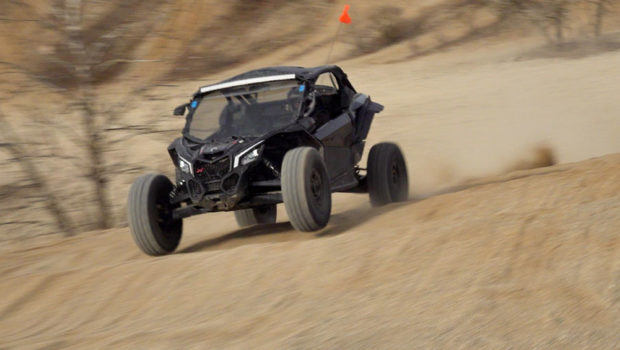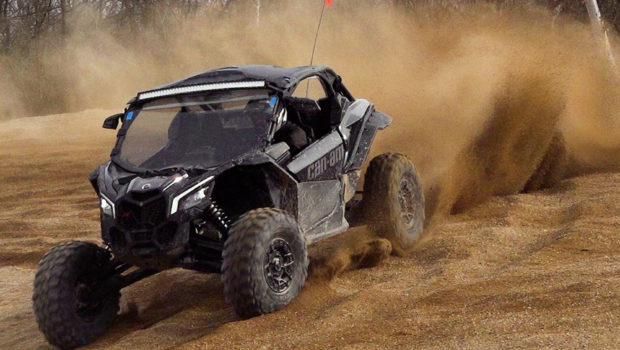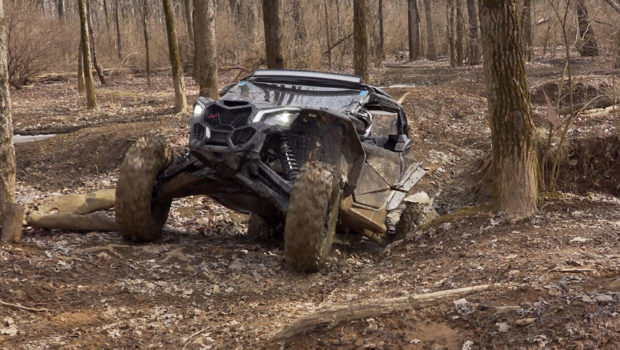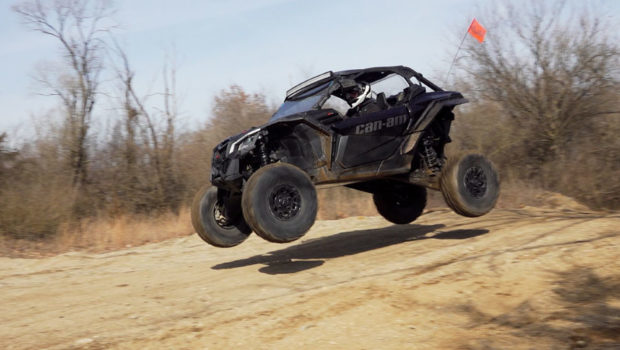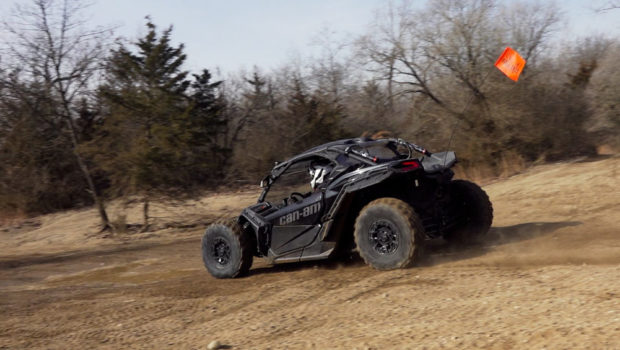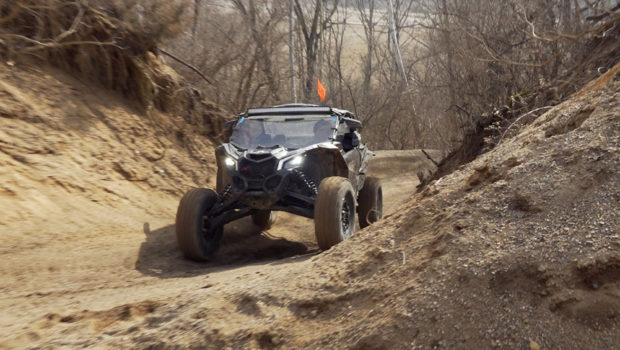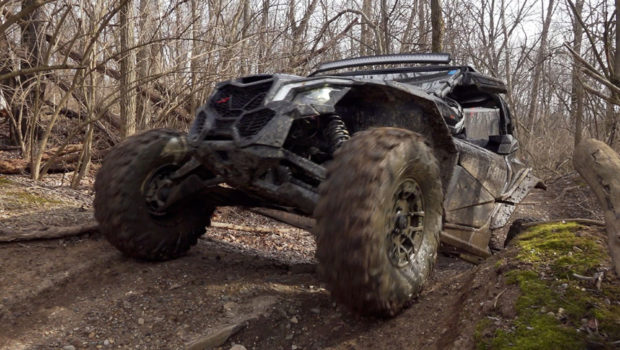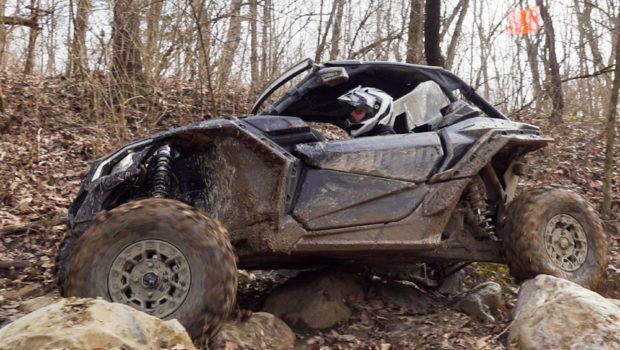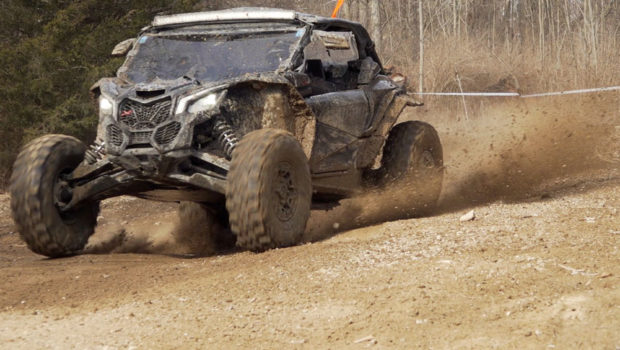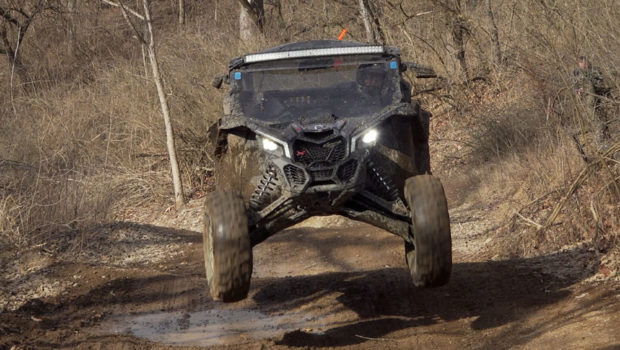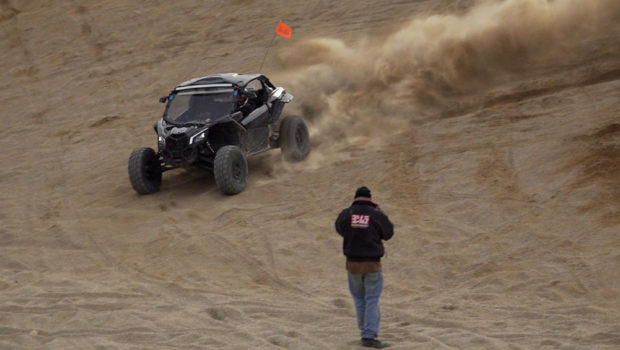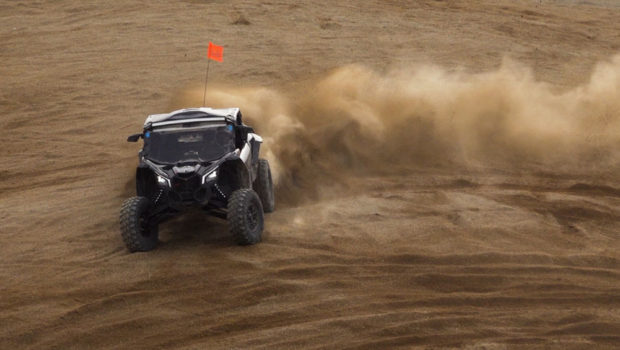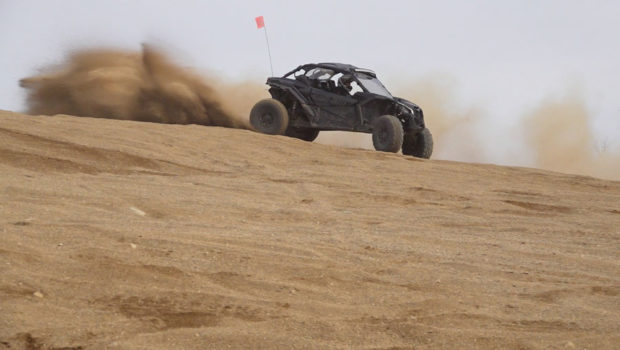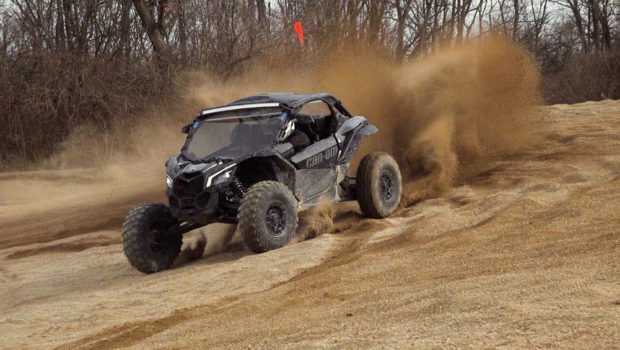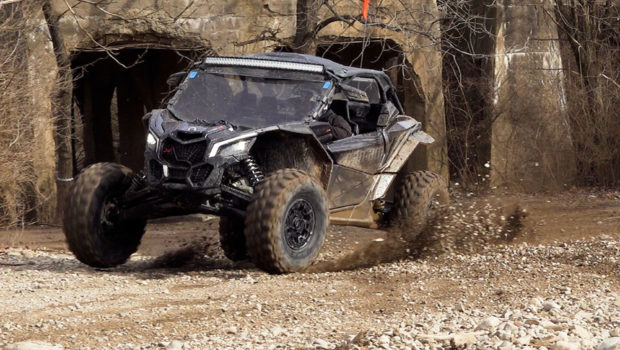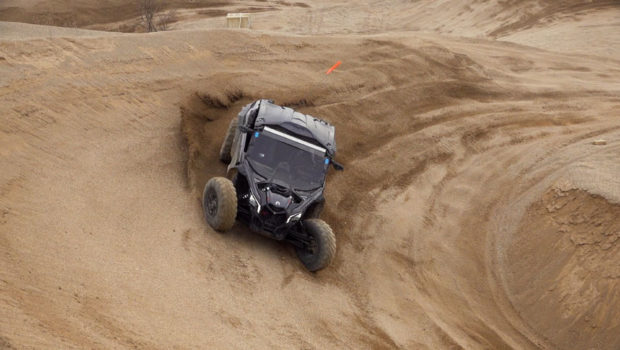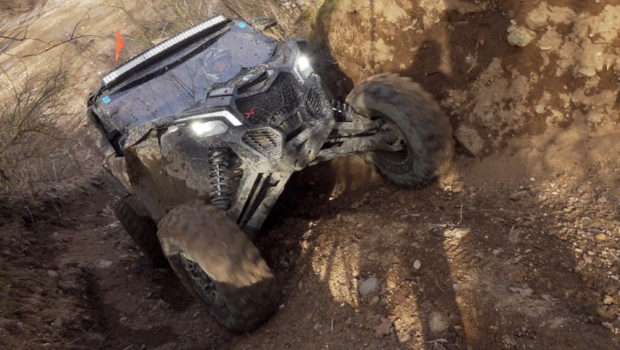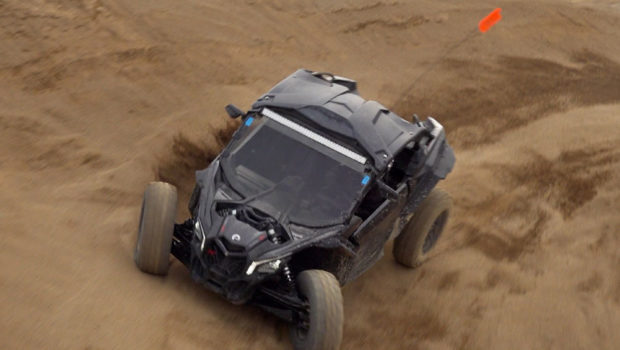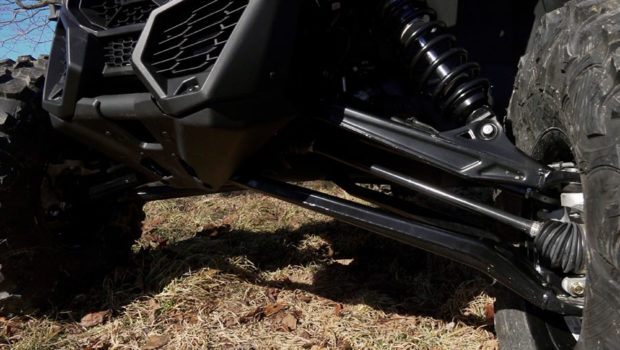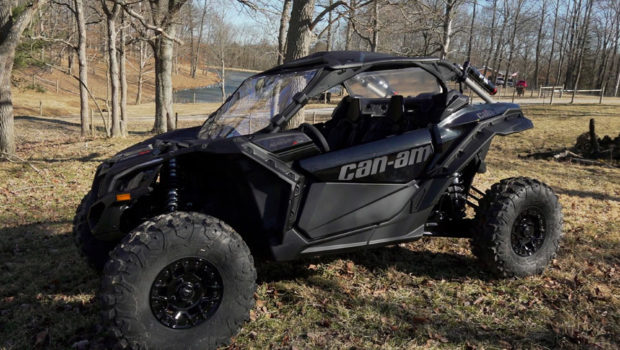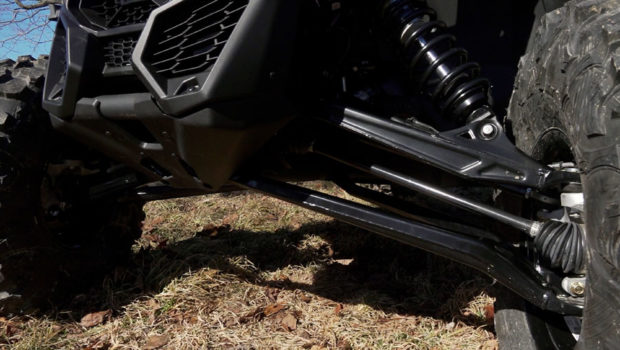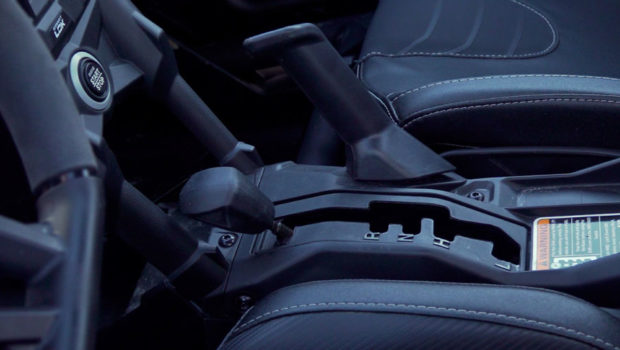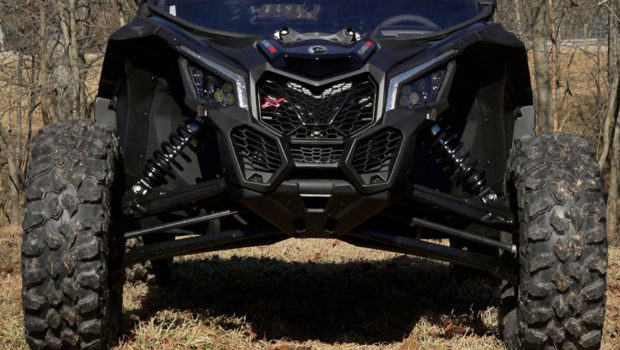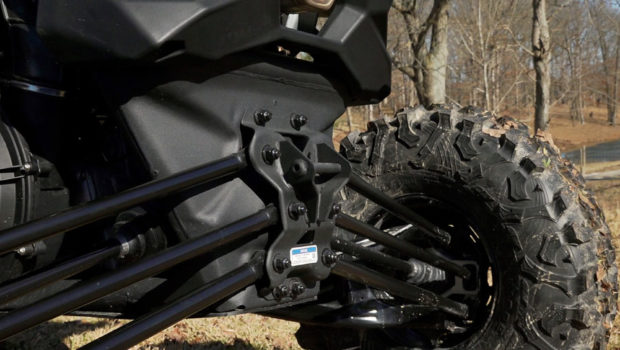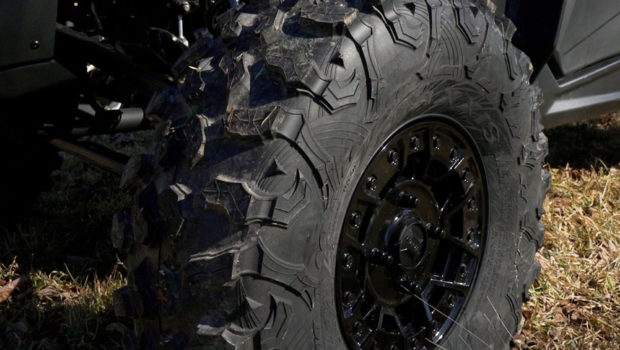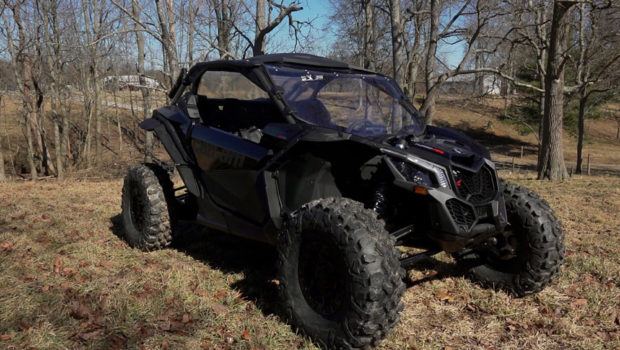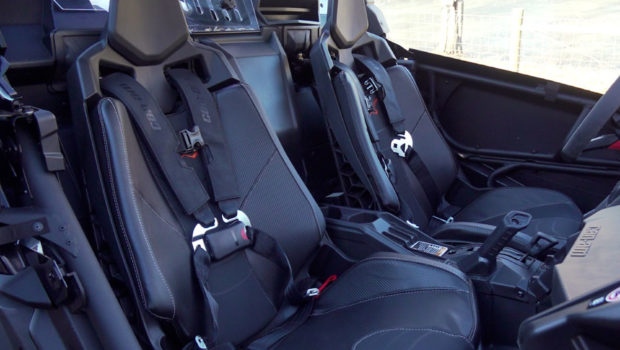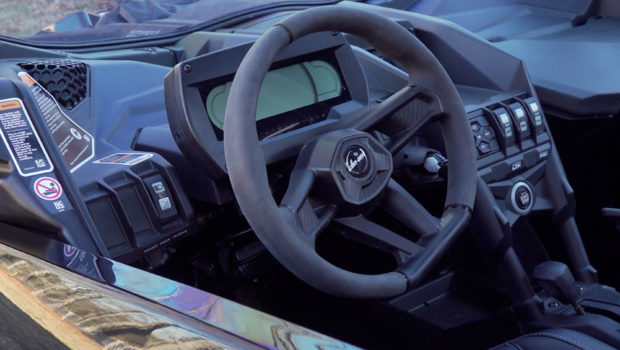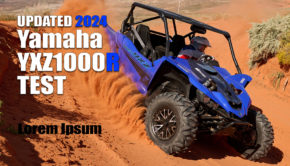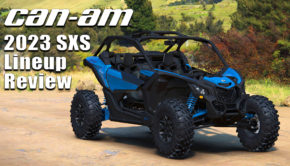Published on April 21st, 2023 | by Joe
2023 Can-Am Maverick X3 X RX Turbo RR with Smart Shox Test Review
In-Depth, Long Term 1,500 Mile Test of Can-Am’s Smart Shox Equipped 200HP Sport SXS
Can-Am’s flagship sport SXS, the Maverick X3, was originally released in 2016 as a 2017 model. It hit the market with 154 turbo charged horsepower in both 64” in wide X DS and 72” wide X RS versions. In years since, Can-Am’s Maverick X3 has received numerous performance and durability refinements. For their top performing RR models, the X3’s most recent round of updates in 2022 brought with it an increase power from 195 hp to 200 hp, new pDrive roller clutch for quicker, smoother CVT response, tire size increased from 30” to 32 on the 72” wide X RS models, and key chassis components were strengthened across the X3 line.
Unchanged for 2023, one year ago, test driver, Eric Jones, purchased the top-of-the-line, 72” wide, Maverick X3 X RS Turbo RR with computer controlled Smart Shox. Eric is a precise driver, able to rack up lots of miles at higher speeds without damaging the machine by crashing into things. For our review of the 2023 Cam-Am Maverick X3 X RS Turbo RR, we’re happy to present to you a test with opinions formed over 1,500 miles of driving, providing us with a well formed opinion of what we love, what we’d change, and how well the machine holds up over time.
Trim Packages
Including the 64” and 72” wide configurations, the 200 hp Maverick X3 RR models are available in 9 trim packages in the two-seat models and 6 trim packages in the four-seat MAX version to match your specific performance needs and budget. Smart Shox are reserved for the 72” wide, top-of-the-line, general use X RS machines in both two and four-seat models.
Can-Am’s snorkeled, mud tire equipped, mud focused X MR packages are available in both two and four-seat models. The rock crawling focused Maverick X3 X RC packages are available in a two-seat configuration only.
Pricing for the 200 hp two-seat, DS Turbo RR models starts at $24,099 with the 72” wide RS model starting at $25,899. The top-of-the-line X RS with Smart Shox we’re testing retails for $32,599. Visit Can-Amoffroad.com to learn more about their different trim packages and pricing.
Testing Location
For testing, we headed to the Badlands Off-Road Park, located in Attica, Indiana. The brown soil in the woods and the coarse, pea gravel sand dunes provide the diverse mix of tight and wide-open, whooped-out terrain needed to put a large, high-performance machine to the test. Plus, the Badland’s soil type is much easier to clean off your machine than clay, even in wet conditions making it a great place to visit and ride year round. If you’re in the market for a new Can-Am or other model you can pick one up out of their massive dealer inventory on site.
Pre Test Modifications
Heading into our test Eric had added a few accessories over the past year. First, he installed a complete set of Can-Am UHMW skid plates . They are much thicker than the factory skid plate and cover the entire underside of the frame. The complete set also covers the lower A-Arms up front and trailing arms out back. Riveted on, they make cleaning underneath them very difficult, but go a long way in protecting the underside of the Maverick from damage. We installed them before the machine’s first drive.
A few accessories, which don’t come standard, including lower door halves, exterior rear view mirrors, light bar, fender flares and a couple other small items were added over the X3’s year of use. However, the X RX with Smart Shox comes pretty well appointed.
Engine Performance
The Maverick’s 900cc triple-cylinder, Rotax engine features 4 valves and double-overhead-cams per cylinder. It’s turbocharged and features an integrated intercooler, pumping out a claimed 200hp, up 5hp in 2022 due to new ECU tuning. At 1,699 lbs, it’s the most powerful one-liter turbo, enjoying the best power to weight ratio in the class.
Air for the engine is drawn from inside the cab high behind the driver with the filter located in the airbox under the left rear wheel well. Electronic fuel injection delivers the air/fuel mixture to the engine. A drive-by wire gas pedal mates up to Can-Am’s intelligent Throttle Control providing two throttle modes, Sport and ECO. Both offer full power at full throttle, but ECO mode delivers less throttle earlier in the throttle throw, making driving more manageable in technical terrain while helping save fuel on long rides.
An engine braking equipped CVT transmission features low and high forward ranges plus neutral, reverse, and park. The CVT’s clutch received a new pDrive clutch in 2022, which added roller bearings to the primary clutch for smoother engagement and improved overall engine responsiveness when combined with the new ECU tuning. It also reduces maintenance. A belt temperature sensor was added to the belt housing helping warn the driver before they cook a belt.
Can-Am’s versatile drivetrain features four modes: two-wheel-drive, four-wheel-drive trail, four-wheel-drive active along with a lockable front differential. Without front differential lock engaged. Can-Am’s Smart-Lok front differential was developed with Team Industries. In 4wd Trail, it delivers power to one front wheel until the system senses that wheel is slipping. At that point, it progressively locks in both front wheels until traction has been restored. This keeps steering lighter while adding traction. Trail Active mode locks in both front wheels more quickly for improved traction and handling during aggressive driving.
Handling and Suspension
The Maverick X3’s steel chassis benefits from years of refinement, last updated in 2022 for added strength in key areas. The cage received nearly 30% thicker tubing delivering a 13% more torsional rigidity. Mounting tabs for suspension components were beefed up at both ends, as were the high-clearance lower A-Arms front and lower radius rods out back. The rear tow plate’s thickness was increased and double shear knuckles were added at the other end of the radio’s rods for improved strength and rigidity.
Overall suspension travel numbers edge out the Polaris Turbo R. Dual A-Arm front suspension provides 22” of wheel travel and a 4-link trailing arm setup out back providing 24” of wheel travel. Sway bars are used at both ends to help keep body roll in check.
Can-Am’s Fox Smart Shox equipped Mavericks were the first to offer computer assisted, semi-active suspension controlling both compression and rebound damping on the fly. Sensors measure throttle, speed, braking, direction and other inputs up to 200 times per second and are able to respond within .017 of a second, working to deliver the plushest, most planted ride possible.
Piggyback reservoir equipped Fox Podium 2.5 shocks are used up front with remote reservoir equipped Podium 3.0 shocks used out back. They utilize Fox internal bypass design to reduce harshness from high-speed impacts. Their computer controlled Smart-Shock technology was developed with 3rd party manufacturer Tractive Industries.
Selected by a switch on the dash, the shocks feature three different ride modes: comfort, sport, and sport plus, providing three different ride characteristics. The shocks are also spring preload and crossover adjustable. Can-Am’s high-torque Tri-Mode Dynamic Power Steering offers three levels of power steering assistance via a dash mounted switch.
A square tire wheel and tire setup features 32×10-14” Maxxis Carnivore tires mounted on 14” cast-aluminum beadlock wheels at all four corners. Beadlock wheels let you run less pressure when needed, add strength, and will allow you to limp back to camp on a flat tire. We’d expect them on a performance car at this price point, and, amazingly, none of the Polaris Turbo R models utilize them.
Maverick X3 RS models measure in at 72.7” wide with a 102” wheelbase, around two inches narrower and 6 inches longer than the Turbo R. Ground clearance is a claimed 16”, identical to its in-class competitor. The X3 RS’ 68.5” overall height is around six inches lower than the Turbo R.
Brakes
Four wheel hydraulic disc brakes slow the Maverick. Dual piston calipers are used at both ends with 262mm rotors used up front and 248mm rotors used out back. Steel braided brake lines come from the factory.
Interior and other details
You enter the Maverick through quarter doors with the latches actuated by nylon pull handles on the inside of the doors.
The bolstered seats provide a low, somewhat reclined seating position. Both seats are slider adjustable. With tools, the seats can be adjusted, raising the back of the seat base providing a flatter seating position while raising the occupant’s sight line over the hood a bit. The seats feature pass-through for the retractable, four-point harnesses that come standard along with a sport roof and center mounted rear view mirror.
On the dash, you’ll find a tilt adjustable steering wheel along with a number of switches controlling the suspension settings, drive mode, throttle mode, power steering mode, lights, an override for limp mode, and digital display readings. There are also a few cut-outs allowing you to install additional switches to control a winch or other accessories.
Conclusion
In 1,500 miles of being driven aggressively in dirt, mud, ruts and rocks, the only items that failed on Eric’s Maverick X3 were a couple of wheel bearings at over 1000 miles, and a small break in a weld on the front of one door frame due to play in the ¼ door. Other than those small items, there are no other issues or failures to report.
On paper, the Maverick X3 XRS Turbo RR is class leading in nearly every way. It’s lighter with more horsepower. Its handling is truly sports car-like suspension that seems to do everything well. After a year and 1,500 miles, we believe the Maverick X3 Turbo RR with Smart Shox definitely lives up to the hype.

